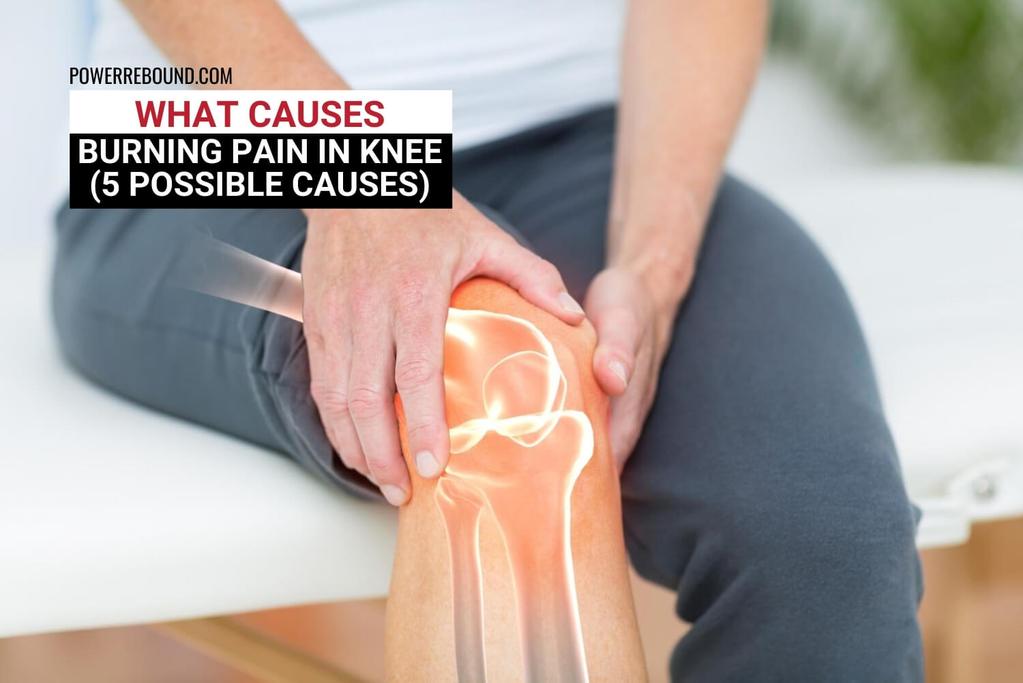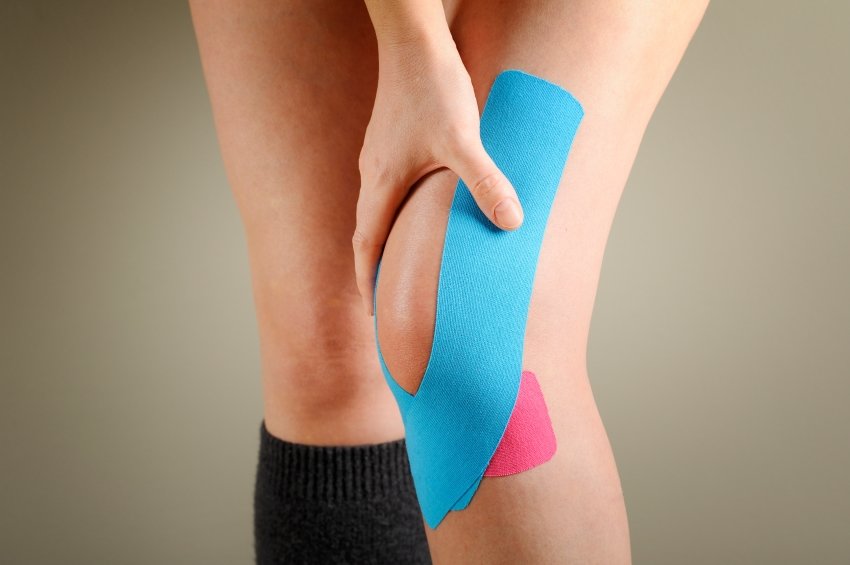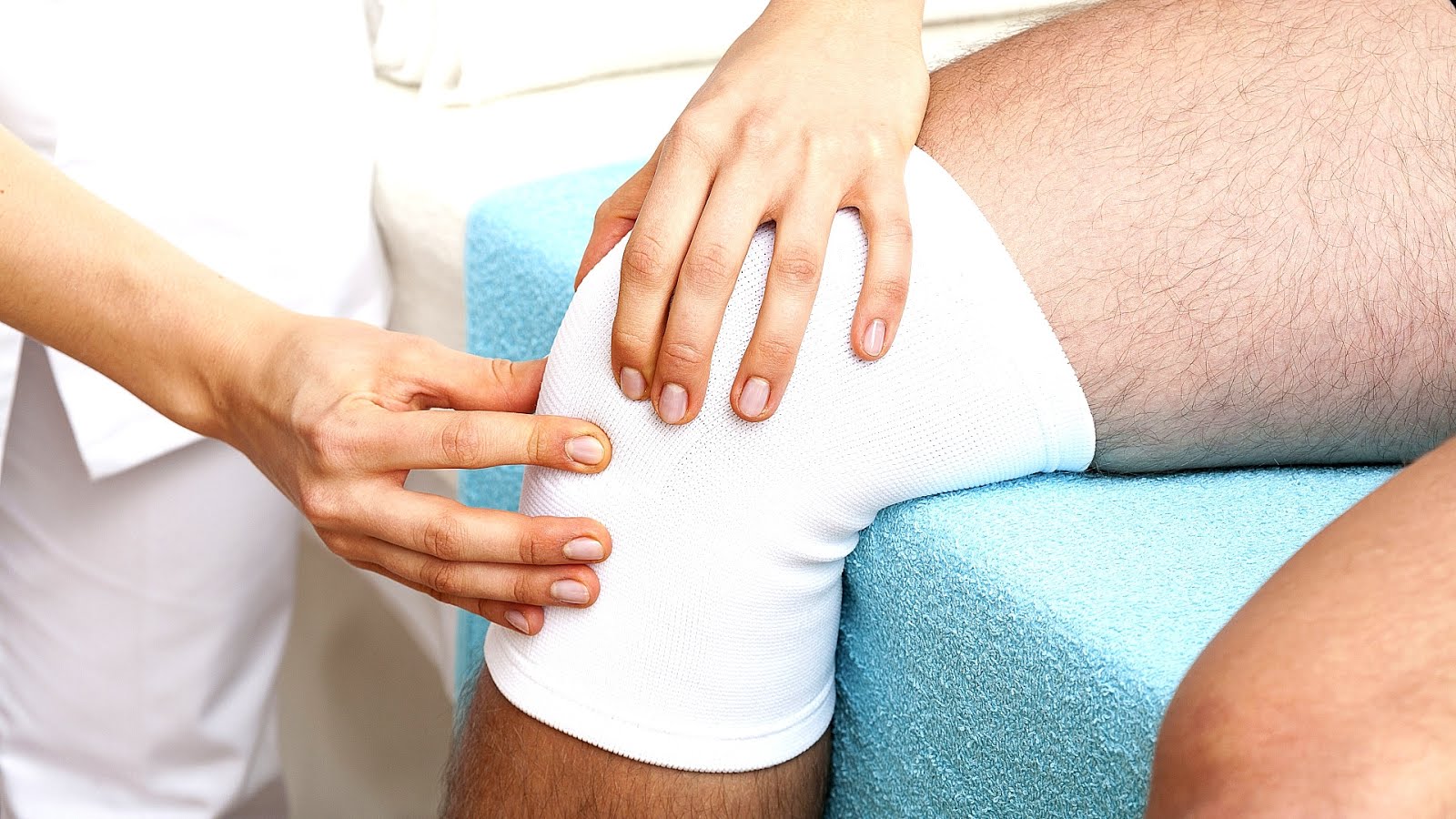What Do Other People Say About Burning Sensation In Knee
“I had a burning sensation in both of my knees. I did some searches online and found that a lack of magnesium can cause this symptom. I increased the intake of magnesium in my diet and after 3 weeks, the burning sensation gradually decreased and then disappeared completely.”
“I had a burning feeling in my knee, too. I went to see my doctor and was diagnosed with an infection in the fluid of the knee joint. Preliminary treatment included draining some of the fluid and a hydrocortisone injection to decrease the inflammation. I was then referred to a rheumatoid arthritis specialist.”
Why Is There A Burning Sensation In My Knee
Feelings of burning knee pain can originate from external and internal sources. Spilling a corrosive substance on your knee, for example, will lead to burning knee pain. Several pathological conditions that occur internally may affect the entire body, but may also specifically present as burning knee pain. The following are just some examples:
Look Into Nerve Blocks
A nerve block is a specific type of knee joint injection that prevents nerves from delivering pain signals to the brain.
After a knee replacement, the most common kind of nerve block for knee pain is a saphenous nerve block. For patients who cannot have knee replacement surgery or who are experiencing chronic knee pain at night from other causes, genicular nerve blocks are another option.
Read Also: How Soon Can I Shower After Knee Replacement Surgery
How To Relieve Burning Sensation In Knee
Depending upon the extent of the damage to the knee joint, wearing a knee brace may be sufficient to decrease the burning sensation in the knee. The knee brace will provide support but still allow movement of the joint. Removing the stress on the knee joint may help reduce the inflammation and hence the burning sensation. Other tips to reduce the pain include:
1. RICE Therapy: rest, ice, compression with a knee brace and elevation.
2. Over-the-counter anti-inflammatories will reduce the pain and inflammation. Be sure to check that you are not allergic to the product and read the package carefully before taking them.
3. Special physiotherapy exercises to improve your strength of your quadriceps muscle which will improve stability of the knee joint.
- Sit on a firm surface with your legs outstretched in front of you. Your knees should not be bent. Use your left hand under the knee to support your left knee. Press that knee into the left hand and hold the heel in the air for a few seconds. Repeat with the right knee and right hand, if necessary.
- Lie on a flat surface with one knee bent. The other leg should be straight and resting on the floor. Slowly raise the straight leg about 20 cm from the ground and hold for a few seconds. Repeat the exercise.
You can watch the video below and learn more exercises to ease the burning sensation in knee.
Possible Causes Of A Burning Or Stabbing Knee Pain

Some knee pain is due to overstretching or excessive strain put on the ligaments and tendons of the knee, possibly by sporting exercise such as athletics or cycling. The ligaments and tendons can become overstressed, irritated and inflamed causing pain. A very common cause of this type of pain is a tear in the meniscal cartilage or surface cartilage of the knee.
Recommended Reading: Why Does My Knee Click When I Walk
Burning Knee Pain Due To The Patella
The most common cause of a burning sensation or feeling in the knee is probably due to the patella or kneecap.; Anterior knee pain syndrome;;is a feeling of pain in the front of the knee.; We are not entirely sure why it occurs. It is most common in young women.; We often find that the hip muscles in these patients are weak, and therefore many people with anterior knee pain or burning will respond to exercises or physical therapy.
Chondromalacia or softening of the cartilage under the kneecap is also a very common cause of pain in the knee. Chondromalacia of the kneecap or patella; is most common in young and middle aged women, but there are many men who suffer from this as well.; Degeneration or softening of the cartilage can cause a burning feeling in the knee.; Chondromalacia itself can be due to prior patella dislocations, or injuries.; ;It can also be caused by poor patella tracking or mechanics.; That is better explained in this article on patella subluxation.
Pain due to chondromalacia is often successfully managed with compression sleeves, and physical therapy. In a small percentage of patients, surgery might be needed if you have patella tracking issues, a history of patella dislocations, or pain that does not respond to traditional non-surgical treatments.
When To See A Doctor
In some cases, a person may receive treatment shortly after sustaining a knee injury. In others, a person may first try to deal with the pain they experience, only seeing their doctor when it becomes severe.
For overuse injuries, the best solution is often to rest, apply an ice pack, and focus on muscle building activities that do not put strain on the knees. However, if the pain continues to build despite resting, a person should talk to their doctor about their symptoms.
They may be able to recommend additional therapies, such as physical or occupational therapy. In severe cases, they may even recommend surgical options.
Also Check: Which Knee Brace For Meniscus Injury
Burning Knee Pain In An Athlete
In an athlete it is not unusual to train a bit harder some days as opposed to others.; A burning sensation in an athlete will usually occur in the front of the knee.; This burning may be felt in the region of the kneecap or the tendons which attach to the kneecap.; If an athlete overtrains, they can strain the quadriceps or patella tendon.; Overtraining refers to a situation where your body was used to a certain level of activity, then you changed that level of activity significantly.; So, instead of doing 10 squats twice a week, you now tried to do 20 or more weighted squats. To minimize the burning pain, a compression sleeve may be a good idea early on.; Then focus on reengineering your training program.; Most painful tendons do not want absolute rest. Most tendons will heal and recover if they are exercised with a lower intensity and less strain.; A jumpers knee, or patella tendonitis is a very common cause of pain in the front of the knee in basketballs players and sprinters. A jumpers knee and others causes of burning tendon pain can be treated with help of a physical therapist or an athletic trainer.
Revolutionary Medical Treatments At The Centeno
Knee nerve pain can be debilitating and require a multitude of medications, surgical procedures and high-dose corticosteroids like cortisone that can lead to other problems. The board-certified physicians at Centeno-Schultz Clinic have revolutionary treatments validated in peer-reviewed literature to improve the function of the nerve and decrease nerve pain .
Using your own blood, platelet-rich plasma, the board-certified physicians at the Centeno-Schultz Clinic are able to inject and hydrodissect around all areas of nerve impingement, leading to your pain. This can include the lumbar nerve roots with an x-ray guided platelet epidural, the SI joint, the sciatic nerve in the pelvis, the sciatic nerve in the thigh, the tibial nerve, or the common peroneal nerve behind the knee. Hydrodissection is an ultrasound-guided injection with extremely small needles to create space around the peripheral nerves in the leg from the tight fascia, muscles, bones, or ligaments that are compressing and irritating the nerve. In addition, the platelets from your own blood improve the function of the nerve.
Read Also: How Do They Do Knee Replacement Surgery
What Causes This Burning Sensation
The burning sensation can be caused by a number of reasons. These include a recent trauma or injury to the knee. This could be the result of a one-time impact as seen in the case of a car accident or a fall or due to repeated injuries as in the case of an athlete.
Another cause for this sensation to occur could be due to a ligament tear in the region. The ACL is injured very commonly in footballers, runners and other sports as well. This injury is notoriously slow to heal and the chance of a recurrent injury down the line always remains high.
In elderly individuals, the burning sensation is commonly associated with a cartilage tear or osteoarthritis. The knee would be subject to the development of frequent swellings if this is the case. Other joints are also likely to be affected if arthritis associated with old age is the primary cause.
There is also something called as Iliotibial Band Syndrome. This is something that affects runners most commonly. Here the bands connected the ilia and the tibia are inflamed. The patient will characteristically complain of a burning sensation down the sides of the leg.
When Do You Feel Better Or Worse
For instance, does walking up or down a flight of stairs trigger pain behind your kneecap? That could be a sign of osteoarthritis. With osteoarthritis, pain also tends to get worse over the day as youre more active.
On the other hand, pain that starts strong in the morning and gets better as you move during the day sounds more like an inflammatory condition, such as rheumatoid arthritis.
If you are seeing a doctor, make note of all of this. The smallest details even the resting positions that bring you the most relief will help infinding the right diagnosis.
Also Check: Why Do My Knees Crack When I Squat
Visiting A Doctor Is Important
img source: minutemediacdn.com
As we have laid earlier, home remedies and even over-the-counter treatments may not work for your case. Therefore you must visit your doctor sooner to avoid severe symptoms of complication. The doctor will do prescription depending on the underlying causes.
For instance, antibiotic may be applied for infection and antihistamines for allergies. Immunosuppressants may also be meaningful etc. Anyway, we will leave this to your doctor, he/she has a wide range of prescription to recommend for you depending on the causes and the severity of symptoms.
Can Stress Cause Burning Sensation

When anxiety kicks in, your bodys stress response can go into overdrive. This can affect your nervous system and cause sensory symptoms like burning or itching of the skin, with or without visible signs. You can experience this sensation anywhere on your skin, including your arms, legs, face, and scalp.
Also Check: How To Avoid Knee Replacement Naturally
What Is A Knee Burning Sensation
A burning sensation in the knee may be related to a number of different processes or disorders. For example, any type of burn to the skin causes pain and burning at the site of the trauma. Damage to the nerves of the legs causes a burning or tingling sensation medically known as . Diabetes and alcohol abuse are two common causes of .
The different forms of arthritis can produce pain and stiffness of the joints including the knee joint, and this pain may be perceived as a burning sensation in some cases.
When the arteries that supply the legs are narrowed due to , a condition known as peripheral artery disease, occurs intermittently in the legs while walking . This may also be experienced as a burning sensation and occurs when there is inadequate oxygen delivery to the tissues in the legs due to the narrowed arteries.
The sudden onset of a burning or tingling sensation in the leg on one side of the body may occur with other symptoms that might indicate a serious or life-threatening condition such as . Seek immediate medical care if you experience sudden or numbness in one leg.
If your knee burning sensation is persistent or causes you concern, seek prompt medical care.
Can You Prevent Nerve Pain In The Knee From Getting Worse
Depending on your presenting complaints and diagnosis, we do have recommendations on preventing the nerve pain from getting worse. These may include:
Being proactive to prevent the patient from getting worse also includes board-certified physicians performing Interventional Orthopedic treatment using ultrasound-guided or live x-ray fluoroscopy guided injections using the healing agents from the patients own body around the areas of nerve irritation in their knee when needed. Being proactive allows patients to maintain their function, improve their pain and slow down the degenerative cascade. Do not take the nerve pain in your knee lightly.
If you are interested in learning a new way of knee treatment, please download this Regenexx-SD e-book at centenoschultz.com.
References
Centeno, Christopher et al. The use of lumbar epidural injection of platelet lysate for treatment of radicular pain.;Journal of experimental orthopaedics;vol. 4,1 38. 25 Nov. 2017, doi:10.1186/s40634-017-0113-5.
Also Check: Can Cortisone Shots Help Knee Pain
What Causes Nerve Pain In Your Knee That Is Directly Related To Knee Problems
Nerve injuries in the knee are common after surgery, like total knee replacement, where the outside nerves get stretched. This can lead to weakness in the ankle commonly referred to as foot drop. There are also superficial sensory nerves that run on the inside and outside of the knee that can be irritated during pressure, certain clothing, knee braces, prior surgery or incisions, or very loose knees, like knock-kneed or bow-legged knees that lead to stretching of the nerves.
Causes Of Pain Behind The Knee
Pain behind the knee can be simple or difficult to diagnose, depending upon the cause. Here are some of the most common causes of posterior knee pain:
Baker’s cyst
A lump-like swelling behind the knee is characteristic of Baker’s cyst, making it fairly easy to diagnose. This type of cyst is also called a popliteal cyst because it is located in the popliteal fossa, a small hollow at the back of the knee.
It forms when synovial fluid gathers at the back of the knee. Injury or stress from arthritis can trigger the accumulation of fluid.
Different forms of arthritis
Arthritis is the generic name given to diseases that affect the joint. Arthritis can cause pain anywhere in the knee joint, including the back.
Knee pain is most often associated with osteoarthritis, the type that is related to aging or overuse. Knee pain can also occur with rheumatoid arthritis, but it will occur in both knees at once.
Gout is a type of arthritis that first attacks the big toe, but later attacks may strike the knees. Septic or infectious arthritis is caused by an infection that lodges in a joint, usually a knee.
Infection
Besides infection in the knee joint , posterior knee pain could result from several other infections, including:
- Infection in the bone
- Infection of one of the fluid-filled sacs called bursae
These infections have different causes and symptoms, although pain, redness, heat, and swelling are typical of most infections.
Injury
Tumor
Deep vein thrombosis
Don’t Miss: How To Stop Limping After Knee Surgery
Consider Knee Joint Injections
There are several types of knee joint injections that can provide long-term relief from knee pain when more conservative measures have failed. Corticosteroid injections can provide relief from pain and swelling. Hyaluronic injections rejuvenate the cushioning and lubrication in the knee.
Knee joint injections are generally recognized as safe, but there are risks and side effects. Its important to talk to your doctor about all of your options.
Pain On The Inside Of The Knee
- Pain on the inside of the knee may be due to the tissue fold becoming irritated by injury or overuse. This is very common and much under-diagnosed, as it cant always be seen on an MRI scan.
- Problems with the menisci can also affect the inner side of the knee. Of course a loose flap of cartilage will also hurt here.
Don’t Miss: Can You Smoke After Knee Surgery
Symptoms And Types Of Burning Knee
A burning sensation can occur anywhere on the knee. Sometimes burning in knee is felt all around, but in other instances a patient may feel burning pain in a specific area. The most common areas are burning pain behind the knee or burning pain in front of knee . For some patients, the knee burning sensation will be felt along the sides of the knee. If you are experiencing burning knee pain in a specific area of the knee, be sure to let your physician know.
Pain On The Outside Of The Knee

- A burning pain at the outside of the knee may be due to iliotibial band syndrome. The iliotibial band is a ligament running down the outside of the thigh to the outside of the knee which can become inflamed and irritated.
- A tear in one of the two menisci can cause pain, swelling, and a feeling that the knee is giving way or locking.
- A burning sensation at the side of the knee can indicate pressure on the menisci and sometimes can be due to a fluid filled cyst.
Also Check: Will Knee Sleeves Help Knee Pain
Pinched Nerve In The Hip
If youve ever experienced a sharp, burning sensation or numbness and tingling that travels down your leg after a long period of sitting you may have a pinched nerve in your hip. If the nerve is pinched for a prolonged period of time it may even cause weakness. Obesity, a herniated disc, arthritis, and a strained muscle may cause a pinched nerve. Pain is usually felt in the groin and radiates down the thigh or buttocks.;